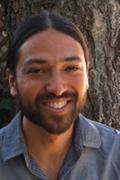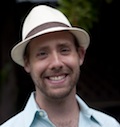University of California Berkeley
Jan 18-19, 2014
9:00 am - 5:00 pm
Instructors: Justin Kitzes, Chris Holdgraf, Mark Wilber
What: Our goal is to help scientists and engineers become more productive by teaching them basic computing skills like program design, version control, testing, and task automation. In this two-day bootcamp, short tutorials will alternate with hands-on practical exercises. Participants will be encouraged both to help one another, and to apply what they have learned to their own research problems during and between sessions. Attendants are offered online office hours: regular events to get one-on-one help from Software Carpentry instructors, online.
Who: The course is aimed at postgraduate students and other scientists who are familiar with basic programming concepts (like loops, conditionals, arrays, and functions) but need help to translate this knowledge into practical tools to help them work more productively.
Where: The bootcamp will be held in Moffitt 103. Facing the main entrance to Moffitt library, look to your right, and you'll see a breezeway entrance with the word "Classrooms" above it. Go through the breezeway and into the door. Straight ahead is the stairwell and to the right is the elevator. Go down to the basement floor and look for room 103.
Requirements: Participants must bring a laptop with a few specific software packages installed. (See below).
Content: The syllabus for this bootcamp will include:
- Using the shell to do more in less time.
- Using version control to manage and share information.
- Basic Python programming.
- How (and how much) to test programs.
- Documentation and debugging.
Contact: Please mail jkitzes@berkeley.edu for more information.
Schedule
| 8:30 - 9:00 | Installation help (optional) |
| 9:00 - 9:30 | Introduction |
| 9:30 - 11:00 | The Shell |
| 11:00 - 11:15 | Break | 11:15 - 12:30 | Scientific Programming I |
| 12:30 - 1:30 | Lunch |
| 1:30 - 3:00 | Scientific Programming II |
| 3:00 - 3:15 | Break |
| 3:15-4:45 | Data and Figures |
| 4:45 - 5:00 | Wrap up |
| 9:00 - 10:45 | Version Control I |
| 10:45 - 11:00 | Break |
| 11:00 - 12:00 | Version Control II |
| 12:00 - 1:00 | Lunch |
| 1:00 - 2:15 | Testing and modules | 2:15 - 2:30 | Break |
| 2:30 - 3:30 | Reproducible Workflow |
| 3:30 - 4:00 | Discussion and Wrap Up |
Setup
To ensure that your laptop is ready for the bootcamp, please follow the installation instructions below.
If you are on a Windows machine, we strongly encourage you to download and install the Virtual Machine, following the instructions below, even if you also install the other individual programs listed here. Unfortunately, none of your instructors use Windows for their research work, and we cannot guarantee that we'll be able to debug or fix problems on Windows machines during the bootcamp.
If you have any trouble with the installation instructions below, please come to the bootcamp 30 minutes early, at 8:30 am on the first day, so that we can troubleshoot your issues.
The Bash Shell
Bash is a commonly-used shell. Using a shell gives you more power to do more tasks more quickly with your computer.
Mac
The default shell in Mac OS X is bash.
Windows
Install Git Bash following the instructions here.
Linux
The default shell is usually bash but if not you can get to bash by opening a terminal and typing bash.
Editor
When you're writing code, it's nice to have a text editor that is optimized for writing code, with features like automatic color-coding of key words.
Mac
We recommend Text Wrangler, Sublime Text, or Text Mate 2.
Windows
Notepad++ is a popular free code editor for Windows. You'll also want to install the command line editor nano, which you can do by downloading this script and running it using the instructions below for testing your setup.
Linux
Git
Git is a state-of-the-art version control system. It lets you track who made changes to what when and has options for easily updating a shared or public version of your code on github.com.
In addition to the below, you should also head over to github.com and create a free account before the bootcamp.
Mac
Download and install the most recent version from hereWindows
Install Git Bash following the instructions here.
Linux
If git is not already available on your machine you can try to install it via your distro's package manager (e.g. apt-get git).
Python
Python is becoming more and more popular in scientific computing, and it's a great language for teaching general programming concepts due to its easy-to-read syntax. We will be using Python version 2.7. Installing all the scientific packages for Python individually can be a bit difficult, so we recommend using an all-in-one installer.
Please install Enthought Canopy. You can either install the Express edition or, better, request and install the Academic edition.
Virtual Machine
Installation issues can and do happen. To ensure that you can continue to participate in a lesson even if one of your software programs fails, we provide a Linux virtual machine that contains most of the necessary software pre-installed.
Please download and install Virtual Box for your OS from here as well as the SWC VM file from here. Load the VM into VirtualBox by doing Import Appliance and loading the .ova file. You can leave all of the options at their default values.
Testing your setup
How do you know if your setup works? To test the installation, open the Canopy application. On the first launch of the application, you will be asked whether you would like to configure the Canopy python to be your default python environment. Please accept this and continue.
Download this script. Open the script in the Canopy editor and click the "run" button (looks like a green rightward-pointing arrow, or "play" icon). You will be asked by the application whether you would like to "see the Python pane". You should see something that looks like this:
check Git (git)... pass
check Nose (nosetests)... pass
check Nose Python package (nose)... pass
check Python version (python)... pass
check IPython script (ipython)... pass
check NumPy (numpy)... pass
check SciPy (scipy)... pass
check Matplotlib (matplotlib)... pass
Assuming you got all that, you're good to go. If any of those
'pass' comes up as 'fail', please come to the bootcamp at 8:30 am on the first day (30 minutes ahead of time) to try to resolve your installation issues.
Reference
Instructors


